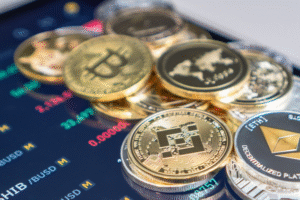Internet Chocks: Exploring the Digital Barriers Hindering Our Online Experience
The internet has revolutionized modern life, offering countless benefits from global connectivity to access to information and entertainment. Yet, despite its transformative power, the digital landscape is not without its challenges. One term that has come to represent these hurdles is “internet chocks,” a catch-all phrase for the various obstacles that can disrupt or degrade our online experience. These digital barriers, which can range from connectivity problems to security risks and content access limitations, affect individuals, businesses, and society on a larger scale. In this article, we’ll explore the causes, impacts, and solutions to the internet chocks that hinder our daily interactions with the online world.
Understanding the Digital Roadblocks: What Are Internet Chocks?
“Internet chocks” refer to the disruptions or barriers that obstruct the smooth functioning of internet-based activities. These chocks can manifest in various forms, often depending on the specific needs and experiences of users. They can be broadly categorized into three main types: connectivity issues, security threats, and content accessibility barriers. By breaking down each category, we can better understand the root causes and impacts of these challenges.
Connectivity Issues: Struggling with Slow or Unstable Connections
Connectivity is one of the most prevalent internet chocks, affecting users in both personal and professional spheres. These issues occur when the internet connection is slow, intermittent, or altogether absent. The primary causes of connectivity issues include:
1. Network Congestion:
Network congestion happens when an excessive number of users access the internet at the same time, often leading to slow speeds or disconnections. This is particularly noticeable during peak hours when people are streaming videos, engaging in online gaming, or conducting large file transfers. Congestion can overwhelm the local infrastructure, causing frustrations for users.
2. Insufficient Bandwidth:
Bandwidth refers to the amount of data that can be transferred over the internet in a given period. When the available bandwidth is not sufficient to handle the traffic, users experience slow speeds, buffering, and frequent interruptions. This can be especially problematic for activities that require large amounts of data, such as HD streaming or video conferencing.
3. Geographical Limitations:
In rural or remote areas, internet connectivity can be limited due to the lack of infrastructure. These regions may lack the necessary broadband networks or have limited access to high-speed internet services, which exacerbates the digital divide between urban and rural populations. Installing cables or establishing satellite connections in these areas can be expensive and challenging, leaving residents at a technological disadvantage.
Security Threats: Navigating the Dangers of the Digital World
As society becomes increasingly dependent on the internet, cybersecurity concerns have grown significantly. These threats can range from basic scams to advanced hacking operations. The most common security threats that create internet chocks include:
1. Cyber Attacks:
Cyber attacks come in many forms, including hacking, phishing, and ransomware. These malicious activities can lead to the theft of sensitive information, financial loss, and damage to the victim’s reputation. As individuals and businesses conduct more of their operations online, the potential for these attacks increases, making it essential to understand and mitigate the risks associated with them.
2. Malware and Viruses:
Malware, including viruses, worms, and Trojans, is designed to infiltrate and damage computer systems. These software programs can degrade the performance of devices, steal personal information, or even completely disable systems. Protection against malware is a constant battle as cybercriminals continue to evolve their tactics.
3. Data Privacy Issues:
Data privacy concerns arise when personal information is collected, stored, or shared without a person’s consent. With vast amounts of personal data circulating online, from shopping habits to health information, the potential for misuse or breaches is significant. Internet users are increasingly worried about who controls their data and how it’s being used, leading to a growing demand for privacy protections.
Content Accessibility Barriers: Breaking Down the Walls of the Digital World
Content accessibility barriers refer to obstacles that prevent users from fully engaging with or accessing online material. Whether due to language barriers, digital literacy gaps, or governmental censorship, these issues limit the effectiveness and inclusivity of the internet. Some common barriers include:
1. Language Barriers:
Despite the internet’s global reach, language remains a significant barrier. Many websites and platforms are only available in a limited number of languages, excluding large populations from accessing valuable content. As a result, individuals who do not speak a dominant language like English may find themselves excluded from important educational, financial, or social opportunities.
2. Lack of Digital Literacy:
Digital literacy is the ability to effectively use digital tools and navigate the internet. A lack of digital literacy can severely limit an individual’s ability to access and use online resources, hindering their personal and professional development. Those who are unfamiliar with online platforms, tools, and security practices are more vulnerable to making mistakes that could result in negative consequences.
3. Censorship and Restrictions:
In some parts of the world, governments impose censorship on online content. This can include blocking access to certain websites, limiting freedom of expression, or curbing access to critical information. Censorship not only restricts the flow of information but also inhibits creativity and intellectual growth by limiting diverse viewpoints.
The Far-Reaching Impact of Internet Chocks
The presence of internet chocks is not merely a nuisance; they have profound effects on individuals, businesses, and society as a whole. The consequences of these disruptions extend beyond slow download speeds and frustrating error messages, impacting productivity, innovation, and social equality.
Impact on Individuals
For individuals, internet chocks create significant frustration and impede productivity. Slow connections can hinder everything from professional work to online education. In today’s world, where many people rely on the internet for remote work, education, and social interaction, poor connectivity can have lasting negative consequences. Security threats, such as identity theft or data breaches, can lead to financial loss and emotional distress, leaving individuals vulnerable in the digital space.
Impact on Businesses
Businesses are particularly susceptible to the effects of internet chocks. Slow or unreliable internet can disrupt operations, delay communication, and lead to lost revenue. Additionally, security breaches can be devastating for a company’s reputation, resulting in legal consequences, financial penalties, and loss of customer trust. As businesses increasingly rely on the internet for everything from marketing to transactions, securing a stable and safe online environment becomes crucial for long-term success.
Impact on Society
On a societal level, internet chocks contribute to the digital divide, exacerbating existing inequalities. Rural or underserved communities often lack access to high-speed internet, limiting their opportunities for education, healthcare, and economic advancement. Furthermore, censorship and restricted content access in certain countries prevent citizens from gaining a well-rounded perspective on global issues, hindering intellectual and political freedom.
Solutions to Overcome Internet Chocks
While internet chocks may seem like unavoidable hurdles, there are various ways to mitigate and even eliminate many of these issues. Addressing these barriers requires a multifaceted approach that combines technological innovation, policy reform, and public awareness. Below are some potential solutions to the most common internet chocks.
Enhancing Connectivity: Building a Stronger Internet Backbone
1. Investment in Infrastructure:
The backbone of a fast and reliable internet connection is infrastructure. Governments and private companies need to invest in upgrading existing networks and expanding broadband access, particularly in rural and underserved regions. This could include the deployment of next-generation technologies like 5G and satellite internet, which have the potential to offer faster speeds and more reliable connections.
2. Network Management:
To prevent congestion and ensure that all users get a fair share of bandwidth, effective network management practices should be implemented. This can include traffic shaping, where certain services are prioritized during high-traffic periods, and improving data routing techniques to enhance speed and reliability.
3. Public-Private Partnerships:
In areas where infrastructure development is slow, public-private partnerships can play a key role. By combining the resources and expertise of both government agencies and private enterprises, these partnerships can drive innovation and ensure that all regions have access to high-quality internet.
Strengthening Security: Protecting the Digital Realm
1. Cybersecurity Best Practices:
Individuals and organizations must adopt strong cybersecurity practices to protect against cyber attacks. This includes the use of encryption, firewalls, antivirus software, and multi-factor authentication. Regular updates to software and systems are also essential for keeping vulnerabilities in check.
2. Raising Awareness:
Educating the public about common cybersecurity threats and best practices is critical for reducing the risks of cyber attacks. Governments, educational institutions, and private organizations should collaborate on creating awareness campaigns and offering training programs to help people protect their digital identities.
3. Legal Frameworks for Data Privacy:
Governments must create and enforce regulations that protect personal data and ensure that businesses handle user information responsibly. Establishing strong data privacy laws and holding companies accountable for breaches is a vital step in securing online environments.
Improving Content Accessibility: Ensuring an Inclusive Internet
1. Multilingual Platforms:
To reduce language barriers, more websites and platforms should offer content in a variety of languages. Providing automatic translation services can also help users access important information in their native languages, empowering them to participate more fully in the digital world.
2. Promoting Digital Literacy:
Digital literacy is a crucial skill for navigating the internet. Schools, libraries, and online courses can help provide people with the tools they need to be confident and capable internet users. Digital literacy programs can bridge the gap between those who are familiar with technology and those who are not, allowing more people to take advantage of online resources.
3. Defending Freedom of Information:
Advocating for an open and free internet is essential for maintaining access to diverse content. Organizations that support human rights and free speech should work together to resist censorship and ensure that people have access to a wide range of perspectives and information.
Conclusion
Internet chocks represent significant challenges in today’s interconnected world. From connectivity issues to cybersecurity threats and content barriers, these obstacles hinder the full potential of the internet. However, through a combination of improved infrastructure, better security practices, and efforts to increase accessibility, we can begin to remove these digital roadblocks and create a more inclusive and efficient online experience for all users. As we continue to navigate the digital age, addressing internet chocks will be crucial in ensuring that the internet remains a valuable and transformative resource for individuals, businesses, and society at large guestdraz.com














Post Comment